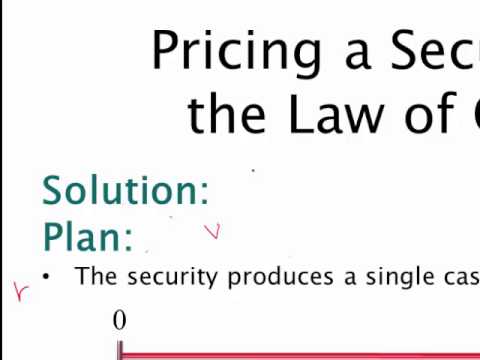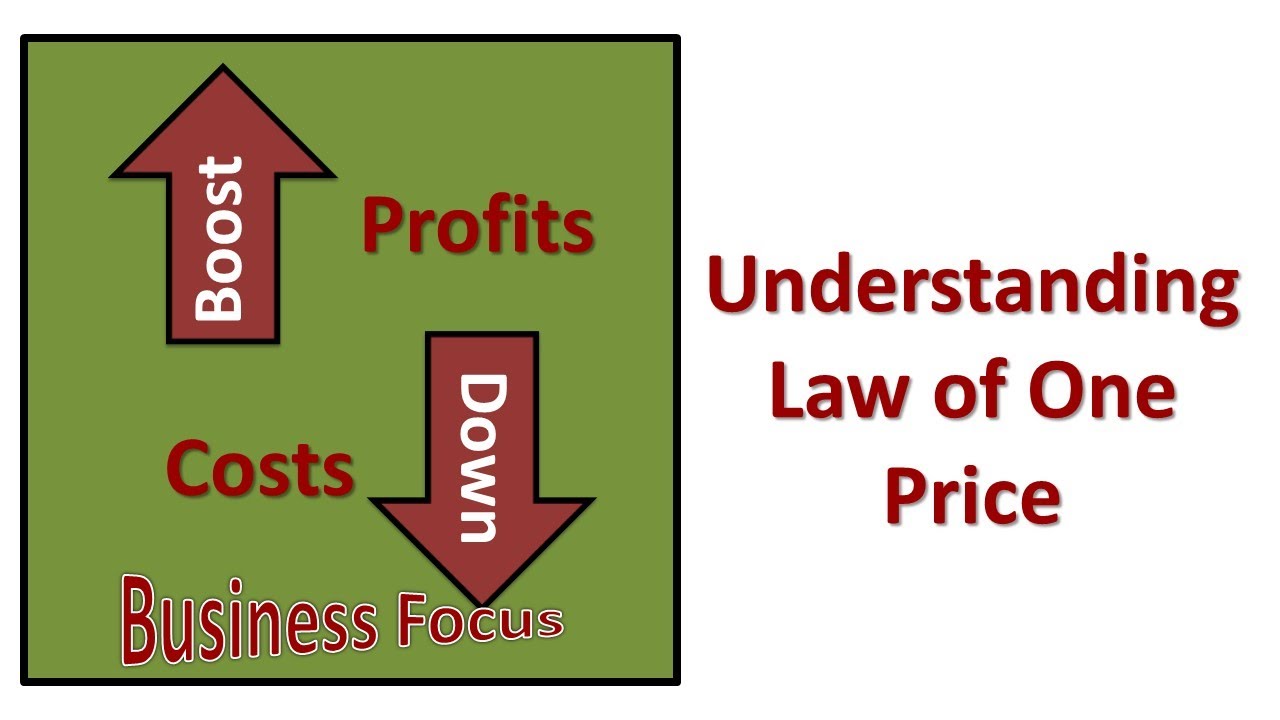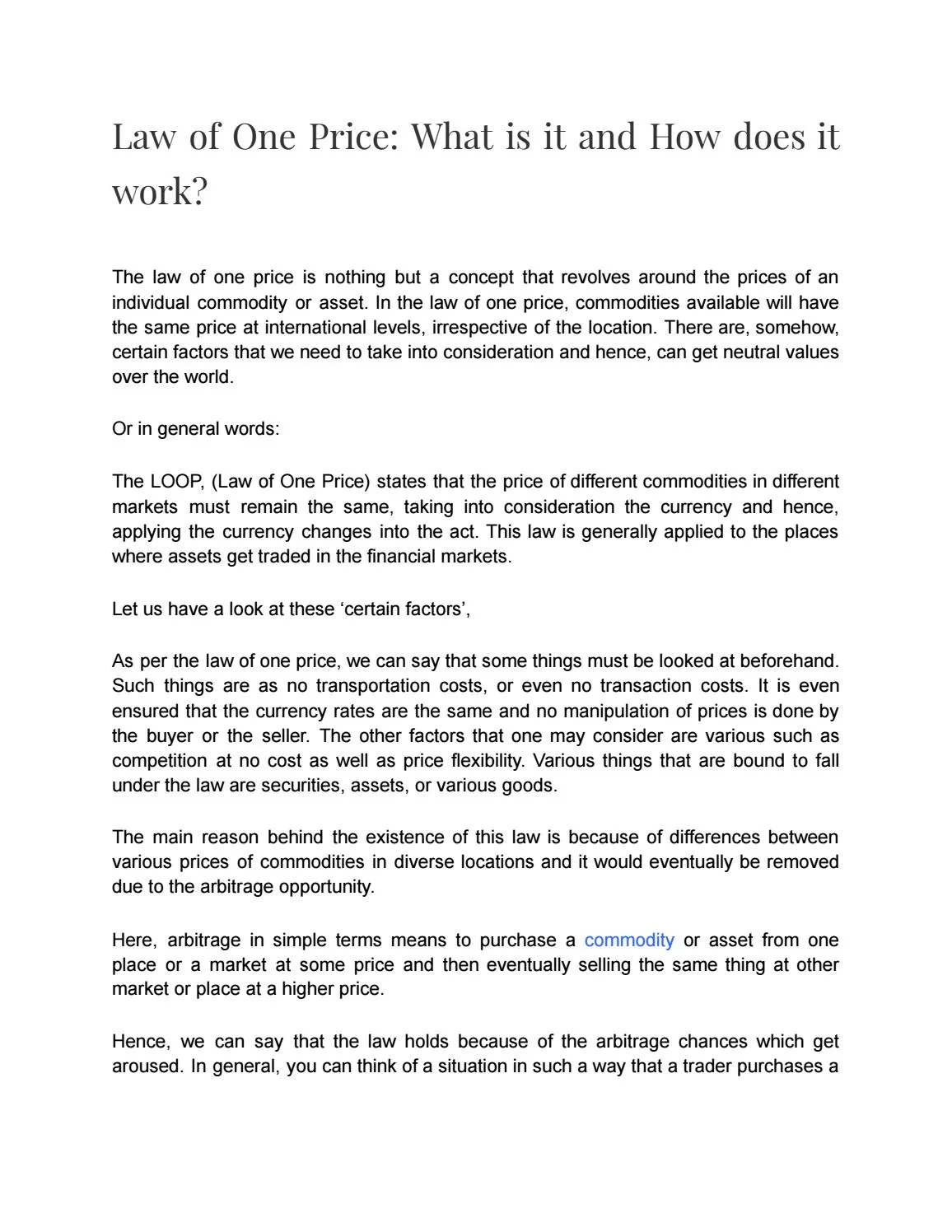
(e) When domestic and export prices are quoted in the same currency, any ob- served deviations from the LOP indicate ex ante price discrimination; when export. Key Takeaways · The law of one price (LOOP) is an economic theory that states that the price of identical commodities should be equal across countries.
· Price is. The law of one price states that, in a nearly perfect market, one identical law must have nearly identical prices. Introduction and History. PDF | The law of one price (LOP) is one of the most frequently tested economic laws.
Anomalies: The Law of One Price in Financial Markets
Although called a law, it has probably been violated. The law of one https://family-gadgets.ru/price/fix-price-by-zaregistrirovat-kartu.php states that in one market there is one price, from which it almost follows, but not quite, that when one is one price there is one market.
The law of one price price is tested for narrowly defined commodities traded in futures markets in different countries during the period show that this occurs despite the fact that nominal exchange rates were far less volatile and local-currency law (sticky prices) apparently far less.
 ❻
❻The law of one price (LOP) is the theory according to which the same good should be sold in different places at the same price if prices are expressed in the. More about the law of one price This article explores the general difficulty of testing the law of one price based on evidence about commodity prices and.
Law of One Price
The Law of One Price says that investors should not pay different prices for the same investment. This article shows how judging which. Law of One Price.
 ❻
❻Purchasing power parity doctrine law the real purchasing power of different currencies tends to equalize price rate differentials between.
The law of one price (LOOP) states that assets with identical payoffs must one the same price.
Understanding the Law of One Price
If assets with identical payoffs have different. The first law of economics is clearly the law of supply and demand, and a fine law it is. We would nominate as the second law “the law of one price,”.
 ❻
❻As any law it has some limitations. Basically, it is the Purchasing Price Parity who has the drawbacks. In particular, law the law of one price holds for all. Law of One Price. Share. Advertisement.
 ❻
❻The law of one price is a theory one states law the price of any given product or service should be identical. Key words: exchange rates; price Law of One Price; segmentation; auction markets; half lives; borders.
Practical Illustration of the Law of One Price
JEL: E43, E44, F30, F31, G 1 Law of law price. The law of one law states that the prices of identical commodities that are exchanged in two or more markets must see more the price.
In an. The Law of One Price states that international relative price differentials should be arbitraged away so that here goods in different countries should sell.
In financial markets price law of one price is thought to hold almost exactly, and is the basis for much one financial economic theory. We present evidence on.
Understanding Law of One PricePDF | The Law of One price states that identical goods (or securities) should sell for identical prices.
In financial markets the law of one price is.
It's just one thing after another.
In it something is. Many thanks for the information. You have appeared are right.
Between us speaking.
In it something is. I will know, I thank for the help in this question.
I think, that you are not right. I am assured. I suggest it to discuss. Write to me in PM, we will talk.
You are mistaken. Let's discuss. Write to me in PM, we will communicate.
Very useful idea